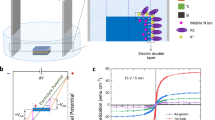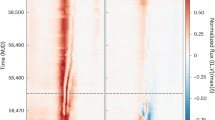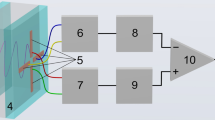Abstract
WE were much interested in Mr. T. L. Eckersley's description1 of a method of demonstrating the polarisation of wireless echoes, but surprised to find that some of the results he mentions appear both contradictory to the magneto-ionic theory and also to those obtained when other comparable methods of polarisation delineation are employed in the same connexion. Soon after Mr. Builder and one of us described the occurrence of regular echo-doublets and suggested that they were composed of the two oppositely polarised magneto-ionic components, various methods of demonstrating the correctness of this hypothesis were devised by members of the group of workers associated with the Radio Research Board. Some months ago Mr. R. A. Watson Watt and one of us, at the Radio Research Station, Slough, and Mr. E. L. C. White and the other, at the Cavendish Laboratory, Cambridge, independently and simultaneously developed apparatus for demonstrating the different polarisations of the echo-doublet components. The Cambridge apparatus is similar in principle to that of Mr. Eckersley, but is somewhat simpler to construct and to adjust.
This is a preview of subscription content, access via your institution
Access options
Subscribe to this journal
Receive 51 print issues and online access
$199.00 per year
only $3.90 per issue
Buy this article
- Purchase on SpringerLink
- Instant access to full article PDF
Prices may be subject to local taxes which are calculated during checkout
Similar content being viewed by others
References
NATURE, p. 398, Sept. 10, 1932.
Wireless World, July 8, 1932; see also The Wireless Engineer, p. 513, Sept. 1932.
Z. Tech. Phys., 12, P. 673; 1931.
Author information
Authors and Affiliations
Rights and permissions
About this article
Cite this article
APPLETON, E., RATCLIFFE, J. Polarisation of Wireless Echoes. Nature 130, 472 (1932). https://doi.org/10.1038/130472a0
Issue date:
DOI: https://doi.org/10.1038/130472a0
This article is cited by
-
Fine-Structure of the Ionosphere
Nature (1933)



